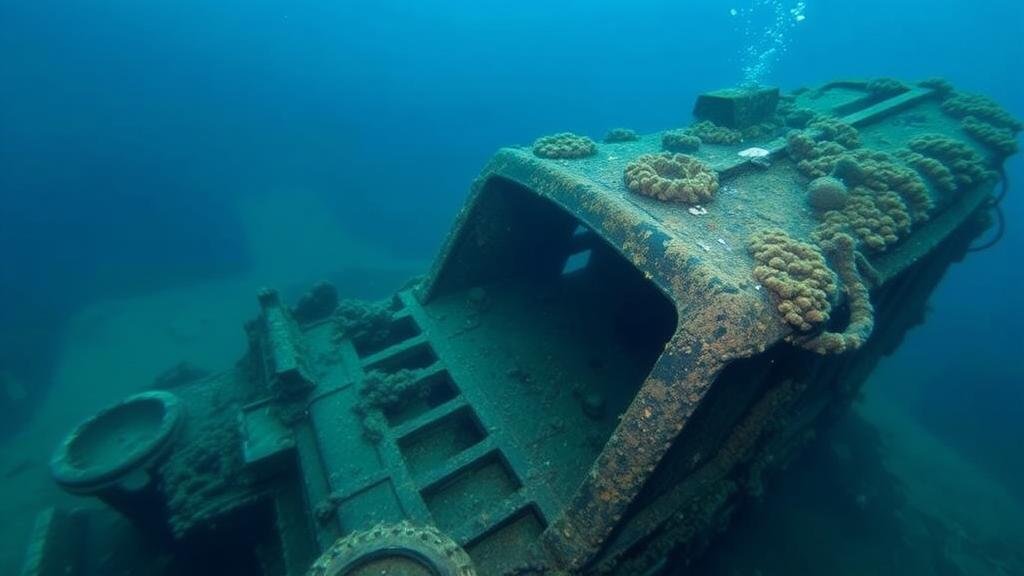How to Identify High-Yield Treasure Areas in Submerged Wreck Sites
Identifying High-Yield Treasure Areas in Submerged Wreck Sites
The allure of treasure hunting in submerged wreck sites captivates both amateur enthusiasts and professional archaeologists alike. Identifying high-yield areas within these submerged landscapes is both an art and a science. By employing systematic approaches, explorers can significantly enhance their chances of uncovering valuable artifacts and historical treasures.
Understanding Shipwreck Dynamics
To effectively identify high-yield treasure areas, it is essential to comprehend the characteristics and dynamics of shipwrecks. Shipwrecks tend to accumulate in specific patterns based on various factors, including:
- Type of Vessel: Different vessels carry distinct cargoes, influencing potential treasure distribution.
- Wreck Location: Areas prone to turbulent waters can lead to debris spread, affecting where artifacts settle.
- Age of the Wreck: Older wrecks typically provide more historical artifacts, which may have been buried over time.
For example, the wreck of the Spanish Galleon Nuestra Señora de Atocha, which sank in 1622, has been a gold mine for treasure hunters, yielding over $400 million in treasure. Its location, historical context, and ship type contribute to its high-yield status.
Conducting Historical Research
Thorough historical research is paramount when attempting to locate high-yield treasure areas. This includes studying:
- Maritime Records: Logs and reports document the voyages of notable vessels.
- Old Maps: Historical maps can provide insights into known ship routes and wreck locations.
- Local Folklore: Legends and anecdotes from local communities may reveal potential shipwreck sites.
For example, marine archaeologists often utilize archives and libraries for maps detailing shipping lanes during colonial times. e documented routes can lead to prospective search areas, resulting in successful recoveries.
Utilizing Modern Technology
Technology has revolutionized the field of underwater archaeology and treasure hunting. Techniques and tools such as:
- Sonar Scanning: This technology allows teams to map the ocean floor and identify anomalies that may indicate wreck sites.
- Magnetometry: A magnetometer can detect metallic objects beneath the seabed, assisting in pinpointing potential treasures.
- Remote Operated Vehicles (ROVs): ROVs provide visual confirmation and retrieval capabilities from deep-water sites.
An example of successful technology application is the use of sonar by the Odyssey Marine Exploration team, which played a critical role in discovering the wreck of the SS Republic in 2003, leading to the recovery of thousands of coins and other artifacts.
Evaluating Environmental Factors
Environmental conditions significantly impact treasure hunting success. Key factors include:
- Water Currents: Understanding currents can help predict how artifacts may have shifted from the original wreck site.
- Sediment Composition: Different sediments affect the preservation of artifacts, with anaerobic conditions being more favorable.
- Marine Life: Areas rich in biodiversity may indicate stable ecosystems that can preserve wreck sites better than barren zones.
In areas like the Bermuda Triangle, shifting sands and strong currents have often scattered artifacts, leading to challenges in locating high-yield areas. On the other hand, the Gulf of Mexico’s underwater banks, where strong but predictable currents exist, have yielded numerous successful recoveries.
Collaboration with Local Experts
Engaging with local fishermen, historians, and environmental groups can provide invaluable insights. Fishermen often share stories of nets snagging on wrecks, while historians may offer unpublished research on maritime disasters in the area. Collaborating with local institutions enhances the depth of research leading to more successful treasure hunting endeavors.
The cooperative efforts between marine archaeologists and fishermen in the Great Lakes have often resulted in discovering hidden wrecks, revealing deep histories and treasures long forgotten.
Conclusion and Actionable Takeaways
Identifying high-yield treasure areas in submerged wreck sites requires a multifaceted approach that includes historical research, modern technology, and collaboration with local experts. By understanding shipwreck dynamics, evaluating environmental factors, and leveraging technological advancements, explorers can significantly improve their treasure-hunting success.
Key actionable takeaways include:
- Conduct comprehensive historical research to locate potential wreck sites.
- Use modern technologies such as sonar and magnetometry to identify underwater anomalies.
- Factors like water currents and marine life must be evaluated for effective treasure retrieval.
- Establish collaborations with local experts to gain insights and enhance exploration efforts.
By integrating these strategies, treasure hunters can enhance their ability to locate and recover valuable artifacts from submerged wreck sites, ensuring that valuable historical narratives are preserved for future generations.



